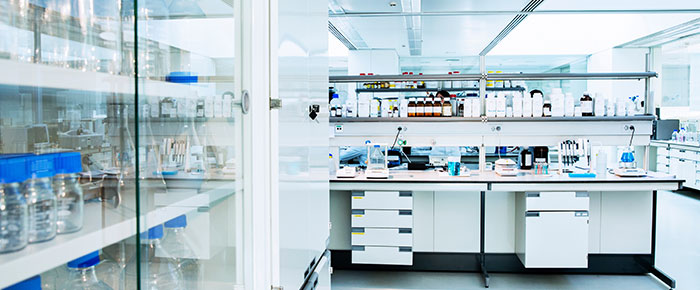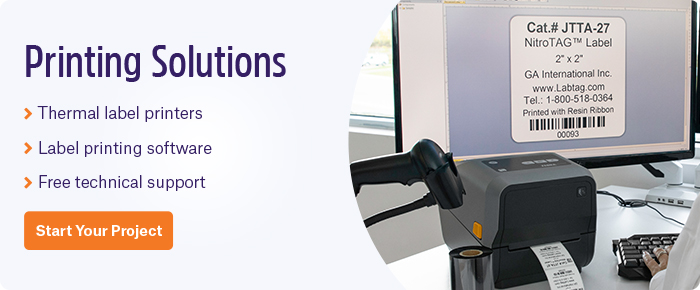
Most labs have to deal with the issue of limited lab space and ensure that the quality of the research being conducted isn’t impacted by the lack of room for experiments and/or equipment. Already saddled with time and budgetary concerns, lab managers must also find a way to make the most of the limited space they have. Here are some tips to help you maximize your space in the lab so that everything you need to work with fits and workflow is optimized.
Record Digitization
Labs need to keep detailed records, even long after publishing their research. In doing so, they often amass an impressive amount of documents and files that need to be kept neatly organized. However, stored in filing cabinets, these documents can take up valuable lab space. Record digitization allows you to free up this space for more important tasks.
Digitization of lab records involves turning all paper-based information into a computer-based format. This can include recording instrument attributes (make, model, serial number, etc.) and sample inventory lists. Digitization is best accomplished using Electronic Lab Notebooks (ELNs) and alongside a Laboratory Information Management System (LIMS). A cloud-based solution is preferred, and data should be revised regularly to ensure it remains up-to-date. With a digital inventory and detailed digital protocols, analysis becomes easier, quality and reproducibility are improved, human error is minimized, and search queries become quick and easy.
Printing & Labeling
Using LIMS software to track samples and equipment requires labels, ideally with barcodes that contain a unique identifier. Other important information can also be included on the label, such as experimental details, reagents, and volumes. In addition to helping keep your inventories well organized, lab labels allow reagents and samples to be shared throughout the lab by clearly identifying the contents of each and every container.
For optimal label use, they should be printed, not hand-written. This requires one of two types of printers: laser/inkjet printers, which most labs already possess for printing articles and documents, or a thermal printer if more durable labels are required. Luckily, many small, lightweight thermal printers are available that leave a small footprint and can be easily set up and moved anywhere in the lab.
Smart Sharing
The lab environment should be a collaborative space optimized for sharing. An open layout facilitates the sharing of equipment, minimizing the need for doubling up on various tools and materials (i.e. pipettes, centrifuges, shakers, vortex, etc.). Specific benches can even be dedicated to particular assays or reserved for specialized equipment to save space. Common-use equipment can even be shared across labs, like nanodrops or spectrophotometers, reducing the need for each lab to allocate space for multiple machines. This requires strong communication lines to ensure everyone can access the devices when needed; the best way to provide orderly access is through specialized booking systems, such as Clustermarket. This type of system utilizes cloud-based reservations, allowing users to book equipment and track usage over time.
Define Work Areas
Assigning tasks to distinct work areas can not only save space in the lab but also help with overall productivity and efficiency. Well-defined work areas allow for specific equipment, supplies, and material to be shared while ensuring they are always easily within reach when performing the experiment. This allows each step of the experimental process to be completed efficiently and quickly, limiting movement and preventing lab workers from getting in each other’s way. In addition, it also limits contamination of material and equipment. For example, material used in radioactive assays should not be used for any other purposes, while only using specific material and supplies for PCR assays helps ensure they remain RNAse-free.
Improved Organization
When managing limited lab space, maximizing the available space is essential. This means organizing your lab using tables and cabinets, but also overhead shelving. Too many labs leave large empty spaces above their benches. An overhead shelf is an ideal storage rack for instrumentation and excess consumables or labware/plasticware. Moreover, workbenches should be kept organized and tidy. This applies to all work areas, especially to fume hoods, where too much clutter can inhibit the proper circulation of air, impacting sterility.
Cleaning & Maintenance
Keeping your work areas clean and tidy after each experiment is also important to prevent dust and other particles from accumulating over your equipment and reagents. Clutter and messes can quickly take up what little space is already available, making things difficult for others who need to use the bench after you. Instead of waiting until the disorder has gotten out of control, get in the habit of cleaning as you go, using some free time to tidy up and put material back in its place. By spending a few minutes cleaning here and there, you can limit cleaning from taking up more of your time later. Proper cleaning habits may be challenging to adopt, but incorporating them into your protocols can make them easier to implement and stick to.
New Technologies
Managing space and assets in the lab is not just about optimizing what you have, it’s about planning for what you need. This can often be a balancing act, dealing with not only limited space but also budgetary constraints. When purchasing new instrumentation, consider critical features such as footprint, sustainability, maintenance costs, and potential return on investment. Lab equipment designed for performance and efficiency will help you maximize the space in your lab. Compact and stackable equipment can free up a significant amount of space, while portable instruments can be freely moved when needed, then stored for later use.
LabTAG by GA International is a leading manufacturer of high-performance specialty labels and a supplier of identification solutions used in research and medical labs as well as healthcare institutions.

